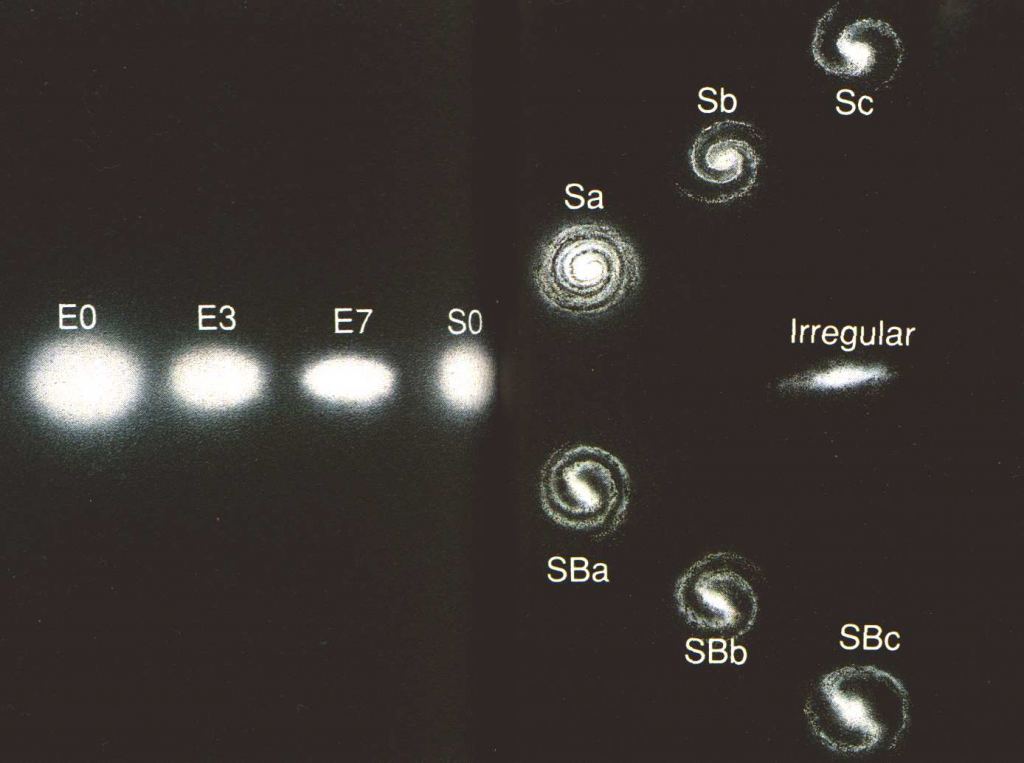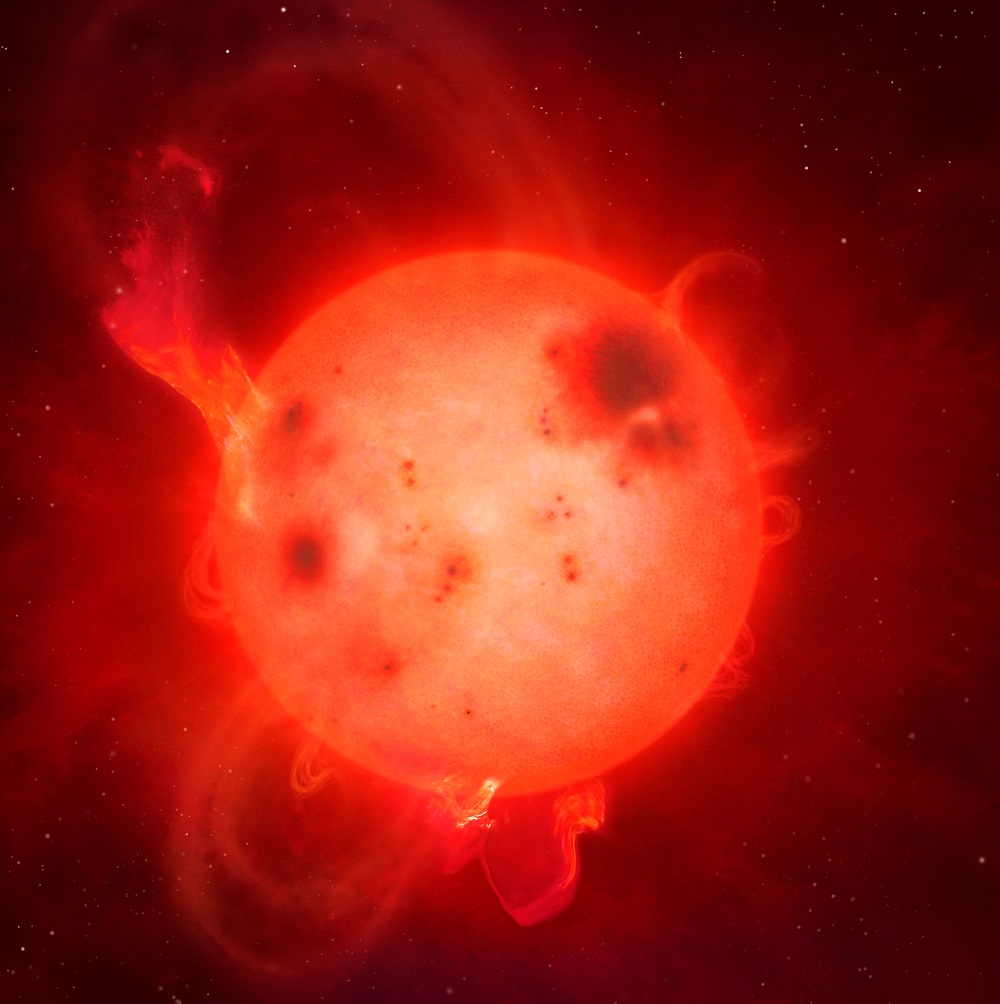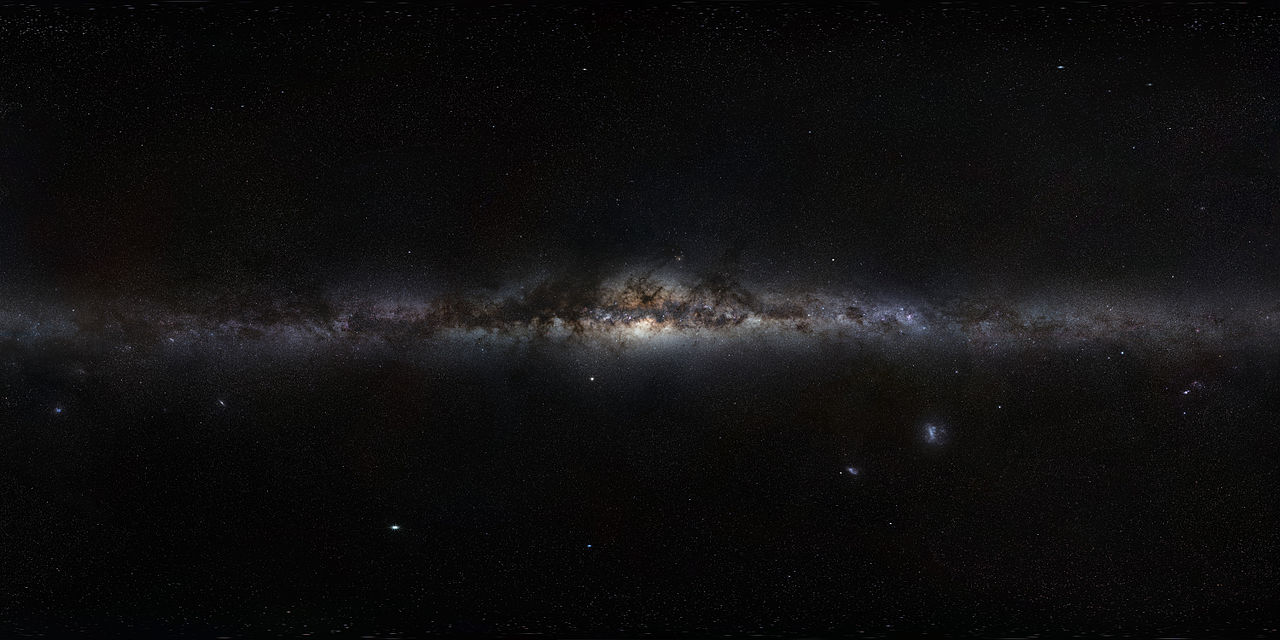How do you study something invisible? This is a challenge that faces astronomers who study dark matter. Although dark matter comprises 85% of all matter in the universe, it doesn’t interact with light. It can only be seen through the gravitational influence it has on light and other matter. To make matters worse, efforts to directly detect dark matter on Earth have been unsuccessful so far.
Continue reading “New Simulation Shows Exactly What Dark Matter Would Look Like If We Could See It”The Last Supernovae

A supernova is a powerful event. For a brief moment in time, a star shines as bright as a galaxy, ripping itself apart in a last, desperate attempt to fight against its gravity. While we see supernovae as rare and wondrous things, they are quite common. Based on observations of isotopes in our galaxy, we know that about twenty supernovae occur in the Milky Way every thousand years. These brilliant cosmic flashes fill the universe with heavy elements, and their remnant dust makes up almost everything we see around us. But supernovae won’t keep happening forever. At some point in the far future, the universe will see the last supernova.
Continue reading “The Last Supernovae”What Shuts Down a Galaxy’s Star Formation?

In the 1920s, Edwin Hubble studied hundreds of galaxies. He found that they tended to fall into a few broad types. Some contained elegant spirals of bright stars, while others were spherical or elliptical with little or no internal structure. In 1926 he developed a classification scheme for galaxies, now known as Hubble’s Tuning Fork.

When you look at Hubble’s scheme, it suggests an evolution of galaxies, beginning as an elliptical galaxy, then flattening and shifting into a spiral galaxy. While many saw this as a reasonable model, Hubble cautioned against jumping to conclusions. We now know ellipticals do not evolve into spirals, and the evolution of galaxies is complex. But Hubble’s scheme marks the beginning of the attempt to understand how galaxies grow, live, and die.
Continue reading “What Shuts Down a Galaxy’s Star Formation?”A New Telescope is Ready to Start Searching for Answers to Explain Dark Energy

Back in 2015, construction began on a new telescope called the Dark Energy Spectroscopic Instrument (DESI). Later this year, it will begin its five-year mission. Its goal? To create a 3D map of the Universe with unprecedented detail, showing the distribution of matter.
That detailed map will allow astronomers to investigate important aspects of cosmology, including dark energy and its role in the expansion of the Universe.
Continue reading “A New Telescope is Ready to Start Searching for Answers to Explain Dark Energy”In the far future, the universe will be mostly invisible

If you look out on the sky on a nice clear dark night, you’ll see thousands of intense points of light. Those stars are incredibly far away, but bright enough to be seen with the naked eye from that great distance – a considerable feat. But what you don’t see are all the small stars, the red dwarfs, too small and dim to be seen at those same distances.
Continue reading “In the far future, the universe will be mostly invisible”What is the Steady State Hypothesis?
When it comes to our cosmic origins, a number of theories have been advanced throughout the course of history. Literally every culture that’s ever existed has had its own mythological tradition, which naturally included a creation story. With the birth of the scientific tradition, scientists began to understand the Universe in terms of physical laws that could be tested and proven.
With the dawn of the Space Age, scientists began testing cosmological theories in terms of observable phenomena. From all of this, a number of theories emerged by the latter half of the 20th century that attempted to explain how all matter and the physical laws governing it came to be. Of these, the Big Bang Theory remains the most widely accepted while the Steady-State Hypothesis has historically been its greatest challenger.
Continue reading “What is the Steady State Hypothesis?”Astronomers Simulated How the Universe Would Look Without Dark Matter
Since the 1960s, there has been a general consensus among astronomers and cosmologists that the majority of the Universe is made up of an invisible, mysterious mass (known as Dark Matter). While scientists still haven’t identified the candidate particle that makes up this mass, indirect tests and simulations have shown that Dark Matter must exist in order for the Universe to be the way it is.
In a fascinating twist, a team of European researchers conducted a simulation that looked at a Universe without Dark Matter. Using an alternative theory known as MOdified Newtonian Dynamics (MOND), the team created a computer simulation in which the galaxies were actually very similar to what we see in the Universe today. These findings could help to resolve one of the most enduring mysteries of modern cosmology.
Continue reading “Astronomers Simulated How the Universe Would Look Without Dark Matter”New Research Suggests that the Universe is a Sphere and Not Flat After All

The universe is a seemingly endless sea filled with stars, galaxies, and nebulae. In it, we see patterns and constellations that have inspired stories throughout history. But there is one cosmic pattern we still don’t understand. A question that remains unanswered: What is the shape of the universe? We thought we knew, but new research suggests otherwise, and it could point to a crisis in cosmology.
Continue reading “New Research Suggests that the Universe is a Sphere and Not Flat After All”Astronomers Uncover Dozens of Previously Unknown Ancient and Massive Galaxies

For decades, astronomers have been trying to see as far as they can into the deep Universe. By observing the cosmos as it was shortly after the Big Bang, astrophysicists and cosmologists hope to learn all they can about the early formation of the Universe and its subsequent evolution. Thanks to instruments like the Hubble Space Telescope, astronomers have been able to see parts of the Universe that were previously inaccessible.
But even the venerable Hubble is incapable of seeing all that was taking place during the early Universe. However, using the combined power of some of the newest astronomical observatories from around the world, a team of international astronomers led by Tokyo University’s Institute of Astronomy observed 39 previously-undiscovered ancient galaxies, a find that could have major implications for astronomy and cosmology.
Continue reading “Astronomers Uncover Dozens of Previously Unknown Ancient and Massive Galaxies”Meet WFIRST, The Space Telescope with the Power of 100 Hubbles
WFIRST ain’t your grandma’s space telescope. Despite having the same size mirror as the surprisingly reliable Hubble Space Telescope, clocking in at 2.4 meters across, this puppy will pack a punch with a gigantic 300 megapixel camera, enabling it to snap a single image with an area a hundred times greater than the Hubble.
With that fantastic camera and the addition of one of the most sensitive coronagraphs ever made – letting it block out distant starlight on a star-by-star basis – this next-generation telescope will uncover some of the deepest mysteries of the cosmos.
Oh, and also find about a million exoplanets.
Continue reading “Meet WFIRST, The Space Telescope with the Power of 100 Hubbles”



